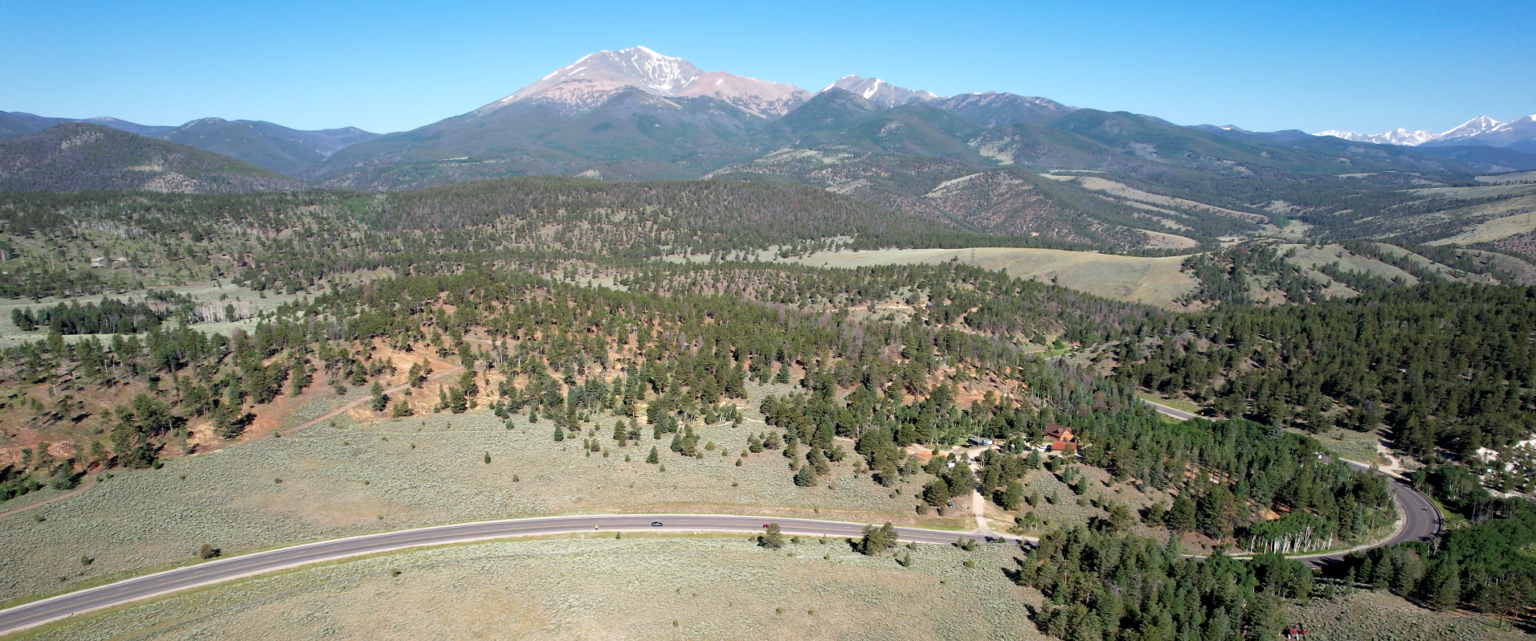
SALIDA, Colo. — Adam Moore observes the forest a little differently than most people. In the early mornings of 2014, as Moore drove U.S. Highway 285 across Poncha Pass, he noticed that something was off.
“I’m looking at the trees over the pass and slowly watching them die from either western spruce budworm or Douglas-fir beetle,” said Moore, a supervisory forester for the Colorado State Forest Service, who splits his time between the Salida and Alamosa field offices.
The usual sea of green was fading to brown, with dead and dying trees dotting the steep hillsides of the small mountain crossing nestled between the San Luis Valley and the Arkansas River Valley. By 2020, most of the trees were dead.
Poncha Pass is particularly unique—the area spreads across the Rio Grande and Arkansas watersheds, split between Saguache and Chaffee counties. Highway 285 cuts the valley down the middle into east and west sections. Poncha Pass is home to many full-time residents, while recreators flock to the hundreds of acres of Bureau of Land Management land on the weekends.
After surveying the area with other CSFS foresters, Moore realized the implications of the declining forest health.
“It’s a critical area for transportation of material goods and for people if they need to evacuate the San Luis Valley. On top of that, there are critical power lines that come over the pass as well,” said Moore.
CSFS foresters worried that the forests would become increasingly unhealthy and eventually turn into a tinderbox for wildfire. It was clear that something needed to be done.
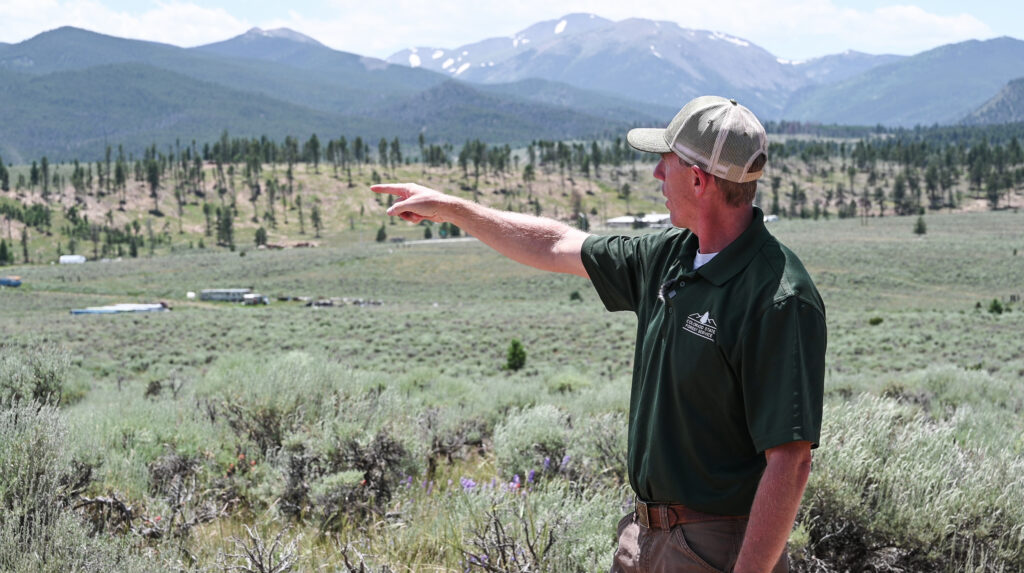
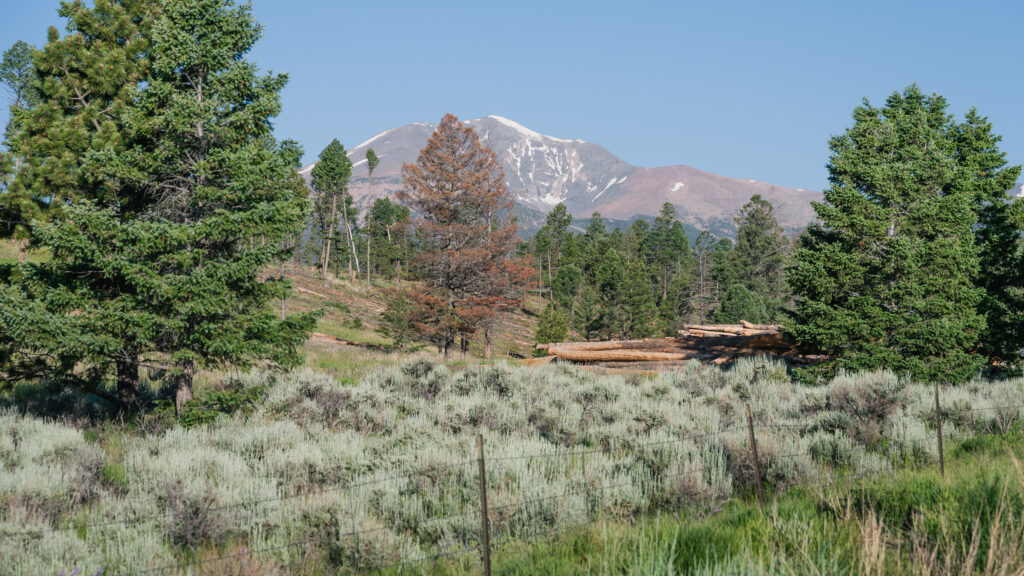

Watching Wildfire Risk
Residents of Poncha Pass were witnessing the decline of the health of forests on their own properties.
These concerns were especially alarming for those who had experienced the 2019 Decker Fire as it burned nearly 9,000 acres of wilderness on the other side of the mountains. Dead and dying trees killed by beetles provided fuel for the flames.
Rick Shovald and his family have lived on the north side of Poncha Pass for over 7 years, tucked along the hillside in a mixed-conifer stand.
“One of our biggest concerns, especially after the Decker Fire, was, ‘How do we get out of here?'” said Shovald.
Like all of their neighbors, Poncha Pass was their main escape route in the event of a wildfire, and it was entirely flanked by dead and dying trees.
“We’re sitting around here with a lot of dead and dying timber, which was at the scary state,” said Shovald.
The insects responsible are native Colorado species but are spreading to problematic levels, in part due to drought that has weakened trees across the state. Western spruce budworm eats and defoliates a tree’s leaves over several years, making it vulnerable to attack. Douglas-fir beetle then enters and kills the stressed tree. This combination has been decimating Colorado forests in recent years, resulting in dead and dying trees across entire forests.
Trees killed by beetles provide a stockpile of fuels that can easily ignite. As a fire gains intensity, wind can lift flames into surrounding tree crowns. After severe wildfire, soil loses its ability to absorb water, where loose sediment can wash down the valley into drinking water and irrigation channels.
Promoting forest health is essential, but protecting homes and communities from wildfire is also a key goal. Dry fuel conditions, risk of home ignition, potential loss of evacuation routes and sediment movement into watersheds are all factors to watch out for. With a year-round wildfire season in Colorado, there could be serious ramifications if a wildfire occurs.


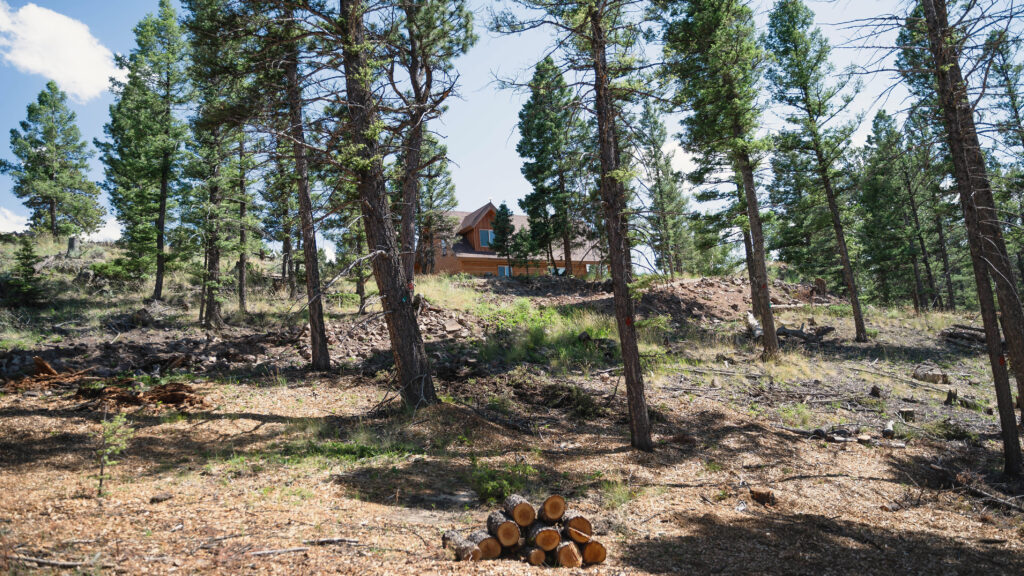
Resiliency and Collaboration
The best way to help improve the health of the forest on Poncha Pass was to remove sick and dying trees to reduce the spread of insects to the rest of the area.
“Up here, the Douglas-fir beetle has gotten to what we would consider an epidemic population level,” said Josh Kuehn, CSFS forester in the Salida Field Office. “We were seeing 60 to 80 percent mortality in some of our acres here.”
Alongside local entities and partners, Moore and CSFS staff developed a forest health and fuels project to address the poor forest conditions based on land ownership type, made possible with funding from National Fish and Wildlife Foundation (NFWF) RESTORE grants, Great Outdoors Colorado (GOCO), Chaffee Common Ground, USFS Western Bark Beetle funds and congressionally delegated spending matching funds led by Sen. Bennet.
With this funding, CSFS staff were able to discuss forest health issues with Poncha Pass landowners and offer treatments to reduce their wildfire risk at no cost to them.
“We knew we needed landowner engagement, involvement and buy-in,” said Adam Moore.
CSFS foresters work closely with landowners, including Shovald, to design specific plans to improve forest health locally by removing dead and dying trees.
“We’re really trying to take a holistic look at the ecology of the area that we’re working in and trying to serve those ecosystems,” said Kuehn, who oversees the private acreage treatments.

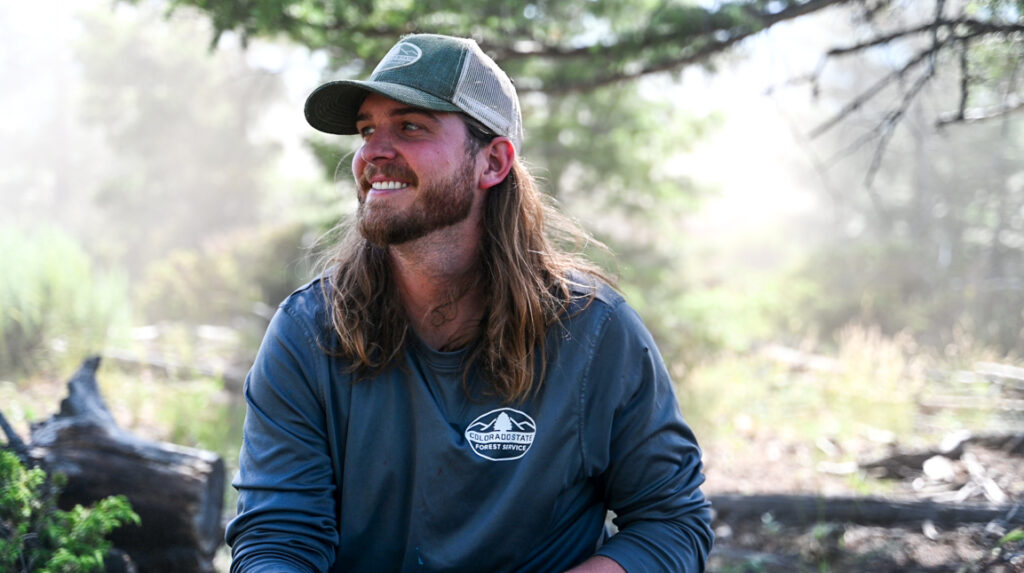
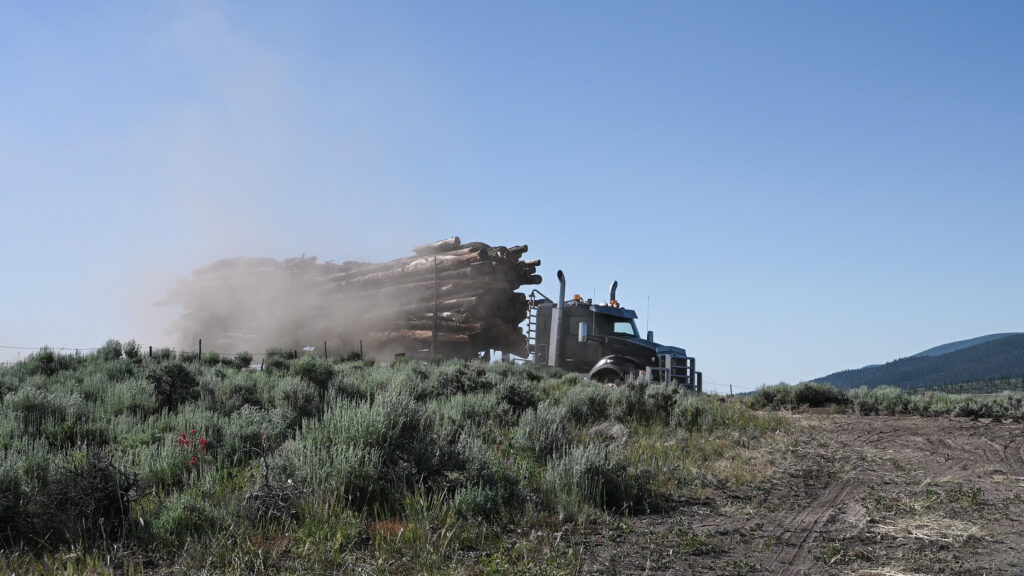
Supporting Future Forests
Within a year, the forests started to look significantly different without the dead and dying trees.
“This is beyond what we ever imagined,” said Shovald, admiring the newly treated forest surrounding his home. “We thinned trees out, and it’s more beautiful than it ever was.”
A healthy forest is one that is resilient in the face of wildfire, insects and diseases. Foresters can help ensure that the forest is structured to prevent widespread mortality from insect epidemics and severe wildfire, which can include removing infected trees.
Local contractors have worked on small stretches of land at a time using a combination of machines and handwork. Careful, selective cuts ensure there is minimal disturbance to the forests. Much of the timber is sent to mills within 100 miles of the area. Slash, or non-marketable limbs, are left on site and turned into mulch to help retain moisture, which helps promote nutrient cycling and the growth of grasses and forbs to support restoration efforts.
Thanks to this work, there will be fewer dead trees to fuel severe wildfire in this area. It will also be safer to evacuate the area and easier for firefighters to suppress flames.
“I feel like I have a real good fighting chance,” said Shovald.
There is more work on Poncha Pass ahead as the CSFS continues to coordinate and support projects alongside the BLM. For now, residents like Shovald have some peace of mind, and the forests can return to shades of green once more.

